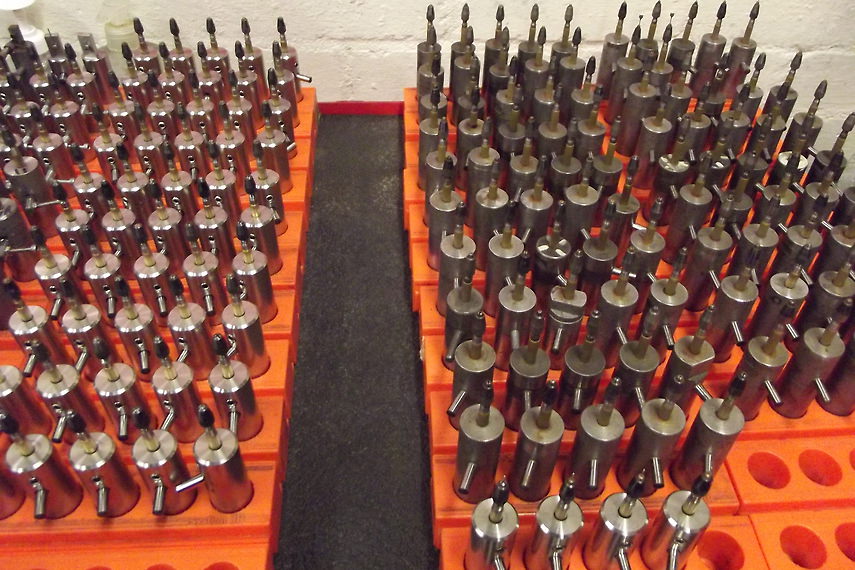Until the mid-1980s, the specialist ophthalmic instruments used for eye surgery were handmade by highly skilled technicians using magnification and miniature anvils. Each instrument took one person up to two working days to make. The very best technicians could make one instrument a day. The BSE crisis meant that these delicate and expensive instruments could no longer be reused. They were too costly to throw away – and it would have been impossible to meet the increased demand. The need for mass- produced, disposable ophthalmic instruments arose almost overnight.
Ophthalmic Instruments
In June 1998, a UK based medical company contacted us with an urgent request. Could we help them make high volumes of instruments with the right quality, replacing time-honoured methods with a mass production alternative? And could we do it at an appropriate cost?
The answer was yes, but it would require a massive investment. This was a commercial risk – but we believed in the product and the benefits for patients. The case was compelling.
To meet our objectives, we created a unique tooling system, a specialised temperature controlled environment and a manufacturing process capable of delivering extreme precision and quality. The specifications were exacting, with one instrument requiring a slot measuring just 30 microns across. It was a complex and demanding task, but we moved quickly through the prototyping stages, collaborating with the customer to make refinements, and encountering few problems and no major setbacks.
The need for mass-produced ophthalmic instruments arose almost overnight.
Our confidence was justified: we were able to deploy our expertise in precision engineering, lean manufacturing and cost avoidance to meet a market price whilst achieving a world-class product. Quality was the over- riding consideration, since the implications of failure are significant, and surgeons operating under high magnification will notice the smallest imperfections.
Quality is also important for achieving the right price. However close we get to perfection, there will always be a degree of hand-finishing. In recent years, cheaper mass-produced instruments have become available, but the extensive finishing needed to achieve an acceptable product means that the final cost is higher.
The ophthalmic instruments developed by The Engineering Quest come in two parts: a handle, and a titanium or surgical stainless steel tip. The standard, high-volume tips are tweezers, scissors, a scalpel-like instrument, and angled tweezers, but there are 196 other variations, and volumes can be as low as 25, 10 or even 5. In the UK the handles are usually made of titanium, and the re-usable tips are frequently customised for individual surgeons. In developing countries the demand is for fully disposable instruments, which usually means generic tips with a plastic handle.
Surgeons operating under high magnification can see the smallest imperfections.
As well as exceptional product development and manufacturing expertise, the right quality also demands outstanding human skills. Basic training can take several months, and our most experienced operatives have been making these products for 10 years or more.
The long-term outcome is that The Engineering Quest is now a leader in a highly competitive market. We are able to make these instruments at a superb quality and price, with minimal extra handwork required, and the skills we have developed have helped us achieve a strong position in the global micro-machining market.

